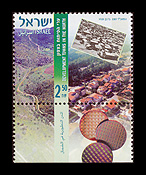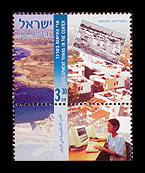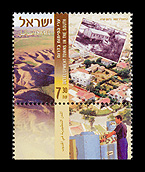|
|
A major urbanization project launched during the first decade and a half of the State of Israel was the establishment of some 30 development towns. Those towns symbolized the absorption of the massive waves of immigrants streaming into Israel during the 1950s' and with the accelerated settlement of the Galilee and the Negev, which had sparse Jewish populations and little urban development until then. The aim was to counterbalance the polarity of the three large cities (Tel Aviv, Jerusalem and Haifa) by the addition of medium-sized urban centers, while forming a contiguous graduated urban-rural settlement pattern between city and country; dispersing the population throughout the country, thereby filling empty spaces in the map of the state; and creating new foci of housing, employment, services, commerce and public administration in the various regions of the country.
Some of the development towns began as ma'abarot (temporary shelters for newcomers) set up adjacent to established villages and towns; others were located in abandoned Arab villages; and still others were built from the start in empty outlying sites. Employment in these towns at first was mainly in agriculture in the surrounding area; later on in commerce and services; and eventually primarily in light industry and profession. At first, population patterns in the towns were marked by sharp internal migration, with alternating growth and decline, but in time the populations stabilized, and today consist of some 30,000-100,000 in each town. Once a town reached a population of approximately 20,000, it was granted the status of a municipality. Some of the towns grew quickly, especially those along the coastal plain, some grew at a medium rate, such as in the Galilee, and others, in the most peripheral areas of the Negev and the eastern Galilee, grew slowly. Those towns that attained demographic and economic viability and over time were able to manage their own economic, educational, cultural and environmental functions, thereby acquiring a pronounced municipal character, are no longer viewed as development towns but as full-fledged cities.
Development Towns in the North, including Upper Nazareth, Karmiel and Ma'alot-Tarshiha, attained considerable success, were considered attractive residential locations, and absorbed new immigrants. Sophisticated industry, hi-tech firms, educational institutions, tourist sites and hotels sprang up in most of these towns, enhanced by the natural beauty of the mountainous terrain. The Galilee development towns constituted a distinctive urban component in the array of agricultural kibbutzim and moshavim, mountain topsite residential communities established during the 1980s, and the many minority villages spread out throughout the region.
Development Towns in the South, typically, are foci of industry based on raw materials and minerals in the Negev mountains and the Dead Sea, chemical industries and desert tourism, as well as serving as transportation hubs and military service providers. The development towns throughout this region are supported by the city of Beer Sheva, which in 1948 had a scant population but has since become the capital of the Negev. It houses administrative and educational institutions, including a university, industry,a hospital, and public services on both the regional and municipal levels.
Development Towns in the Center
while scattered throughout the coastal plain from Tirat Karmel in the north to Olryat Gat in the south, are concentrated mainly in the Dan region, built on the foundations of abandoned Arab villages. These, towns have become centers of services for urban populations, administrative bodies, financial and hi-tech centers, and especially dormitory suburbs of metropolitan Tel Aviv. Their location in the center of the country near the main transportation routes aided their rapid growth. They are typified by modern urban construction, educational, cultural, public service and financial institutions, and innovative industrial firms.
The development town project played a major role in developing the country's various regions and in dispersing its population. Israel is the only country in the world in which development towns contain so large a proportion of the total population (some 20% of the county's Jewish population).
Prof. Elisha Efrat
Geographer and Planner



